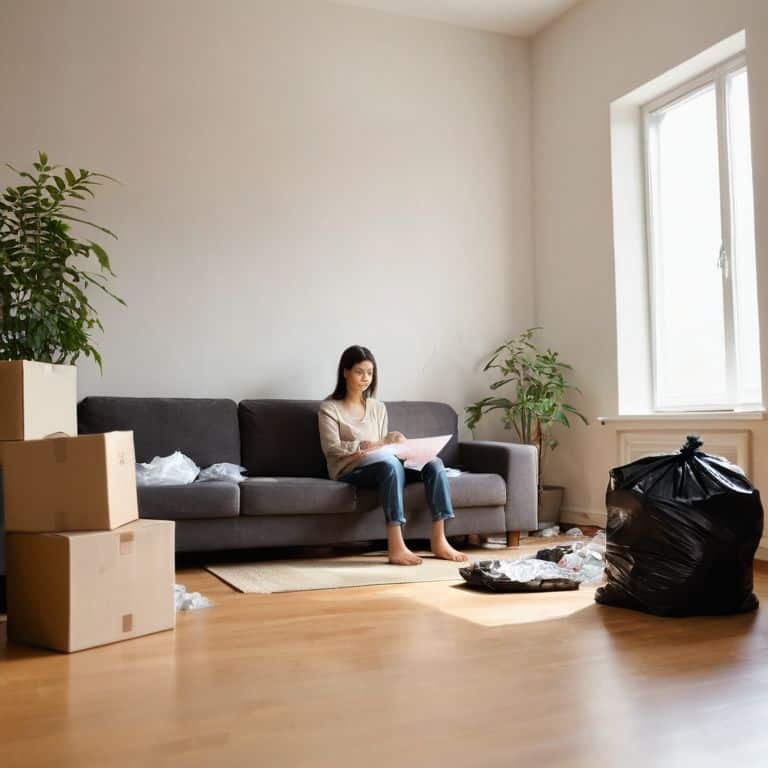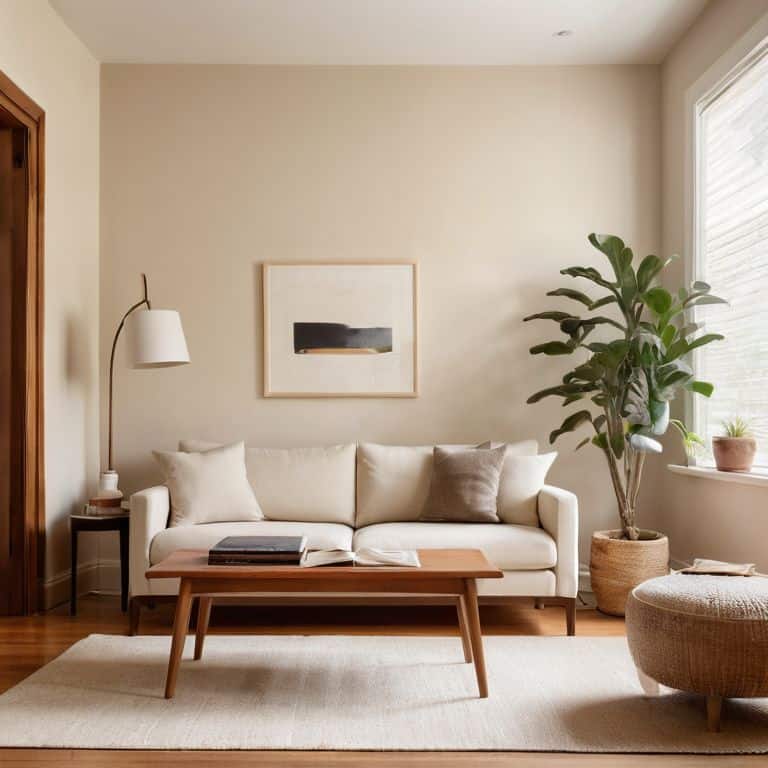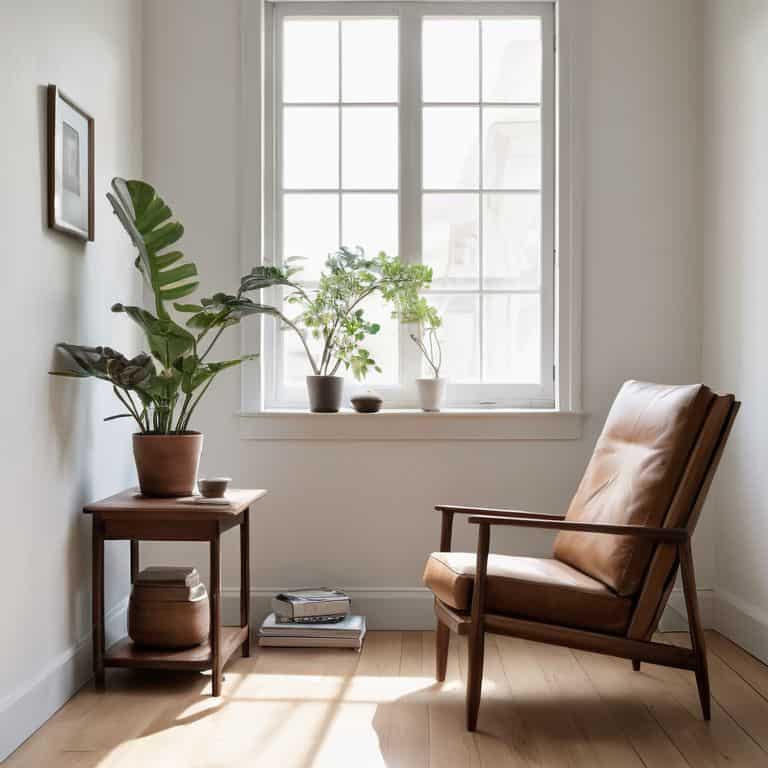I still remember the day I decided to embark on my own minimalist journey, eager to simplify my life and find some peace in the chaos. But, as I delved deeper into the world of minimalism, I realized that there were many common mistakes to avoid when becoming a minimalist that could easily derail my progress. One of the most frustrating myths I encountered was the idea that minimalism is only for those who can afford to get rid of everything and start from scratch. The truth is, minimalism is for anyone who wants to live a more intentional, clutter-free life.
As someone who’s been in the trenches, I want to share with you the honest, no-hype advice you need to avoid the pitfalls of minimalism and create a space that truly reflects your values. In this article, I’ll walk you through the most common mistakes people make when becoming a minimalist, and provide you with practical tips on how to overcome them. From learning to let go of sentimental items to creating a system that works for you, not against you, I’ll show you how to make minimalism a sustainable lifestyle choice that brings you peace of mind and a sense of freedom.
Table of Contents
Guide Overview: What You'll Need

Total Time: 1 hour to several weeks
Estimated Cost: $0 – $100
Difficulty Level: Intermediate
Tools Required
- Journal or Notebook (for tracking expenses and goals)
- Measuring Tape (for measuring spaces and items)
- Label Maker (for organizing and categorizing items)
Supplies & Materials
- Storage Containers (for organizing and decluttering)
- Donation Boxes (for charitable donations)
- Recycling Bins (for responsible waste disposal)
Step-by-Step Instructions
- 1. First, let’s start by understanding that minimalism is a journey, not a destination. It’s about creating a space that reflects your values and allows you to live more intentionally. To begin, take some time to _reflect on your motivations_ for wanting to adopt a minimalist lifestyle. What are your goals? What do you hope to achieve? Write down your thoughts and feelings to help clarify your vision.
- 2. Next, it’s essential to _assess your current space_ and identify areas that feel cluttered or overwhelming. Take a walk through your home and make a note of the spaces that make you feel anxious or stressed. Consider the emotional attachment you have to certain items and how they may be contributing to your feelings of clutter. Be honest with yourself – it’s time to let go of items that no longer serve you.
- 3. Now, let’s talk about the importance of _creating a “maybe” box_. This is a box where you’ll place items that you’re not sure about keeping or letting go of. Set a deadline, say six months, and if you haven’t used or thought about the item by then, it’s likely safe to let it go. This box will help you avoid the mistake of holding onto items out of fear or uncertainty.
- 4. The next step is to _focus on one area at a time_. It’s tempting to try to tackle your entire home at once, but this can lead to feelings of overwhelm and burnout. Instead, start small and focus on one area, such as your desk or a single shelf. Clear everything off the surface and sort items into categories (e.g., keep, donate, sell, throw away). This will help you make decisions about what to keep and what to let go of.
- 5. As you begin to declutter, it’s crucial to _establish a “home” for each item_. This means assigning a designated spot for each belongings, making it easier to find and put things back in their place. This will help you avoid the mistake of clutter creep, where items slowly start to accumulate again. Take the time to think about where each item should live and make sure it’s easily accessible.
- 6. Another common mistake to avoid is _keeping items “just in case”_. This mindset can lead to holding onto items that are no longer needed or useful. Instead, _practice the art of letting go_ and trust that you can always acquire something again if you need it. Remember, the cost of keeping an item is not just the physical space it takes up, but also the mental energy it requires to maintain.
- 7. Finally, it’s essential to _schedule regular maintenance_ to ensure your space remains clutter-free. Set aside time each week to _review your progress_ and make adjustments as needed. This will help you stay on track and avoid the temptation to fall back into old habits. By making maintenance a habit, you’ll be able to enjoy the peace and calm of your minimalist space for years to come.
Common Mistakes to Avoid

As I work with clients to create their ideal living spaces, I’ve noticed a few pitfalls to watch out for when embracing a minimalist lifestyle. One of the most significant challenges is the tendency to oversimplify the process, leading to unsustainable expectations. It’s essential to recognize that adopting a minimalist lifestyle is a journey, not a destination. By focusing on decluttering strategies for beginners, individuals can set themselves up for long-term success.
Another area where people often struggle is in the realm of sustainable minimalism practices. It’s not just about getting rid of stuff; it’s about creating a system that promotes mindful consumption and reduces waste. This might involve implementing minimalist budgeting advice, such as the 30-wear rule, where you only purchase items that you can commit to wearing at least 30 times. By being more intentional with our purchases, we can reduce clutter and create a more peaceful living environment.
Ultimately, the key to maintaining a minimalist lifestyle is embracing imperfection. It’s about recognizing that it’s okay to make mistakes and that perfection is not the goal. By focusing on progress, not perfection, individuals can create a more balanced approach to minimalism that prioritizes their well-being and happiness. This mindset shift can have a profound impact on one’s relationship with their belongings and their living space, leading to a more serene and organized home.
Beyond Clutter Minimalist Lifestyle Tips
As we move beyond the common pitfalls, it’s essential to focus on the habits that will bring us closer to our minimalist goals. For me, it’s about creating a sense of flow in my home, where every object has a purpose or a place. I encourage my clients to “interview” their belongings, asking themselves if each item brings joy or serves a functional purpose. By doing so, we can begin to let go of the emotional attachment to clutter and create a space that truly reflects our values.
By adopting this mindset, we can start to see our homes as a reflection of our minds – calm, serene, and organized. It’s not just about getting rid of stuff; it’s about cultivating a deeper sense of peace and clarity in our daily lives. As someone who’s passionate about carpentry and bonsai trees, I’ve learned that simplicity and attention to detail can be truly therapeutic.
Sustainable Minimalism Budgeting Advice
As we navigate the journey to minimalism, it’s essential to consider the financial implications of our choices. I’ve seen many individuals get caught up in the excitement of adopting a new lifestyle, only to overspend on trendy minimalistic products or pricey organization systems. To maintain a balanced approach, I recommend setting a realistic budget and prioritizing needs over wants. By doing so, you’ll be able to allocate resources efficiently and make conscious purchasing decisions that align with your values.
By embracing sustainable minimalism, you’ll not only reduce waste but also cultivate a more mindful relationship with your finances. I encourage you to explore cost-effective alternatives, such as repurposing items or shopping second-hand, to achieve your minimalistic goals without breaking the bank.
5 Common Pitfalls to Sidestep on Your Minimalist Journey
- Holding onto items ‘just in case’ without considering their actual utility or the space they occupy
- Underestimating the emotional attachment to certain belongings and not having a strategy for letting go
- Not setting clear goals for what minimalism means to you, leading to confusion and inconsistent decision-making
- Trying to adopt a one-size-fits-all minimalist approach without considering your personal needs, lifestyle, and preferences
- Focusing solely on the physical act of decluttering without addressing the underlying habits and thought patterns that lead to clutter accumulation
Key Takeaways for a Harmonious Minimalist Journey
Embracing minimalism is not just about decluttering your space, but also about cultivating a mindset that values simplicity and intentionality in every aspect of your life
By understanding and avoiding common pitfalls such as holding onto items out of guilt or fear, you can create a more genuine and sustainable minimalist lifestyle that brings peace and clarity to your daily life
Remember, the journey to minimalism is personal and should be tailored to your unique needs and values, focusing on creating a home and life that reflect your true self and provide a sense of serenity and fulfillment
A Minimalist Mindset
The greatest mistake we make when embracing minimalism is not in the act of letting go, but in neglecting to consider why we held on in the first place – for it’s in understanding our attachment that we find true freedom.
Nathan Reed
Embracing the Minimalist Mindset

As we’ve explored the common mistakes to avoid when becoming a minimalist, it’s clear that embracing simplicity is a journey, not a destination. We’ve discussed the importance of understanding your motivations, avoiding impulse purchases, and creating a purpose-driven space. By being mindful of these potential pitfalls, you can set yourself up for success and create a home that truly reflects your values. Remember, minimalism is not just about getting rid of stuff, but about cultivating a sense of clarity in your life.
As you continue on your minimalist path, I encourage you to stay focused on the freedom and peace that come with living simply. Don’t be too hard on yourself if you slip up – simply acknowledge the setback and gently guide yourself back on track. With time and patience, you’ll find that the benefits of minimalism extend far beyond your physical space, and into the very core of your being. By embracing this lifestyle, you’ll be able to breathe easier, think clearer, and live more intentionally.
Frequently Asked Questions
How do I know if I'm keeping something out of sentimental value or if it's just clutter?
When deciding, I ask clients to ‘interview’ the item: what memory does it hold, and is it truly serving a purpose? If it’s just taking up space, it might be clutter. But if it brings joy or tells a story, it’s likely worth keeping.
What are some common pitfalls to watch out for when trying to adopt a minimalist mindset in a small or shared living space?
Honestly, I’ve seen people struggle with adopting a minimalist mindset in small or shared spaces. Common pitfalls include not communicating with roommates about shared goals, not measuring furniture before buying, and underestimating the impact of sentimental items on clutter.
Are there any specific emotional or psychological challenges that people commonly face when trying to let go of possessions and adopt a more minimalist lifestyle?
Embracing minimalism can be emotionally daunting, as it forces us to confront attachment to possessions. I’ve seen people struggle with feelings of guilt, nostalgia, and fear of loss. It’s essential to acknowledge these emotions and reframe letting go as an act of liberation, rather than deprivation, to create a smoother transition to a more minimalist lifestyle.
